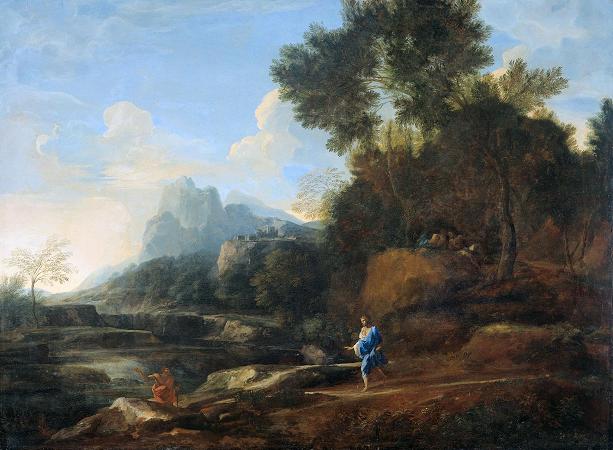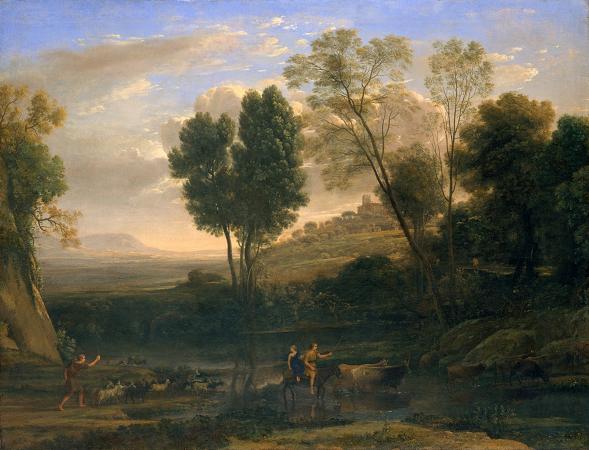Classicism Painting. Classicism, in the arts, refers generally to a high regard for a classical period, classical antiquity in the Western tradition, as setting standards for taste which the classicists seek to emulate. In its purest form, classicism is an aesthetic attitude dependent on principles based in the culture, art and literature of ancient Greece and Rome, with the emphasis on form, simplicity, proportion, clarity of structure, perfection, restrained emotion, as well as explicit appeal to the intellect. The art of classicism typically seeks to be formal and restrained: of the Discobolus Sir Kenneth Clark observed, if we object to his restraint and compression we are simply objecting to the classicism of classic art. A violent emphasis or a sudden acceleration of rhythmic movement would have destroyed those qualities of balance and completeness through which it retained until the present century its position of authority in the restricted repertoire of visual images. Classicism, as Clark noted, implies a canon of widely accepted ideal forms, whether in the Western canon that he was examining in The Nude, or the literary Chinese classics or Chinese art, where the revival of classic styles is also a recurring feature. Classicism is a force which is often present in post-medieval European and European influenced traditions; however, some periods felt themselves more connected to the classical ideals than others, particularly the Age of Enlightenment, when Neoclassicism was an important movement in the visual arts. Classicism is a specific genre of philosophy, expressing itself in literature, architecture, art, and music, which has Ancient Greek and Roman sources and an emphasis on society. It was particularly expressed in the Neoclassicism of the Age of Enlightenment. Classicism is a recurrent tendency in the Late Antique period, and had a major revival in Carolingian and Ottonian art. There was another, more durable revival in the Italian renaissance when the fall of Byzantium and rising trade with the Islamic cultures brought a flood of knowledge about, and from, the antiquity of Europe. Until that time, the identification with antiquity had been seen as a continuous history of Christendom from the conversion of Roman Emperor Constantine I. Renaissance classicism introduced a host of elements into European culture, including the application of mathematics and empiricism into art, humanism, literary and depictive realism, and formalism. Importantly it also introduced Polytheism, or paganism, and the juxtaposition of ancient and modern. The classicism of the Renaissance led to, and gave way to, a different sense of what was classical in the 16th and 17th centuries. In this period, classicism took on more overtly structural overtones of orderliness, predictability, the use of geometry and grids, the importance of rigorous discipline and pedagogy, as well as the formation of schools of art and music. The court of Louis XIV was seen as the center of this form of classicism, with its references to the gods of Olympus as a symbolic prop for absolutism, its adherence to axiomatic and deductive reasoning, and its love of order and predictability. This period sought the revival of classical art forms, including Greek drama and music. Opera, in its modern European form, had its roots in attempts to recreate the combination of singing and dancing with theatre thought to be the Greek norm. Examples of this appeal to classicism included Dante, Petrarch, and Shakespeare in poetry and theatre. Tudor drama, in particular, modeled itself after classical ideals and divided works into Tragedy and Comedy. Studying Ancient Greek became regarded as essential for a well-rounded education in the liberal arts. The Renaissance also explicitly returned to architectural models and techniques associated with Greek and Roman antiquity, including the golden rectangle as a key proportion for buildings, the classical orders of columns, as well as a host of ornament and detail associated with Greek and Roman architecture. They also began reviving plastic arts such as bronze casting for sculpture, and used the classical naturalism as the foundation of drawing, painting and sculpture. The Age of Enlightenment identified itself with a vision of antiquity which, while continuous with the classicism of the previous century, was shaken by the physics of Sir Isaac Newton, the improvements in machinery and measurement, and a sense of liberation which they saw as being present in the Greek civilization, particularly in its struggles against the Persian Empire.
more...













